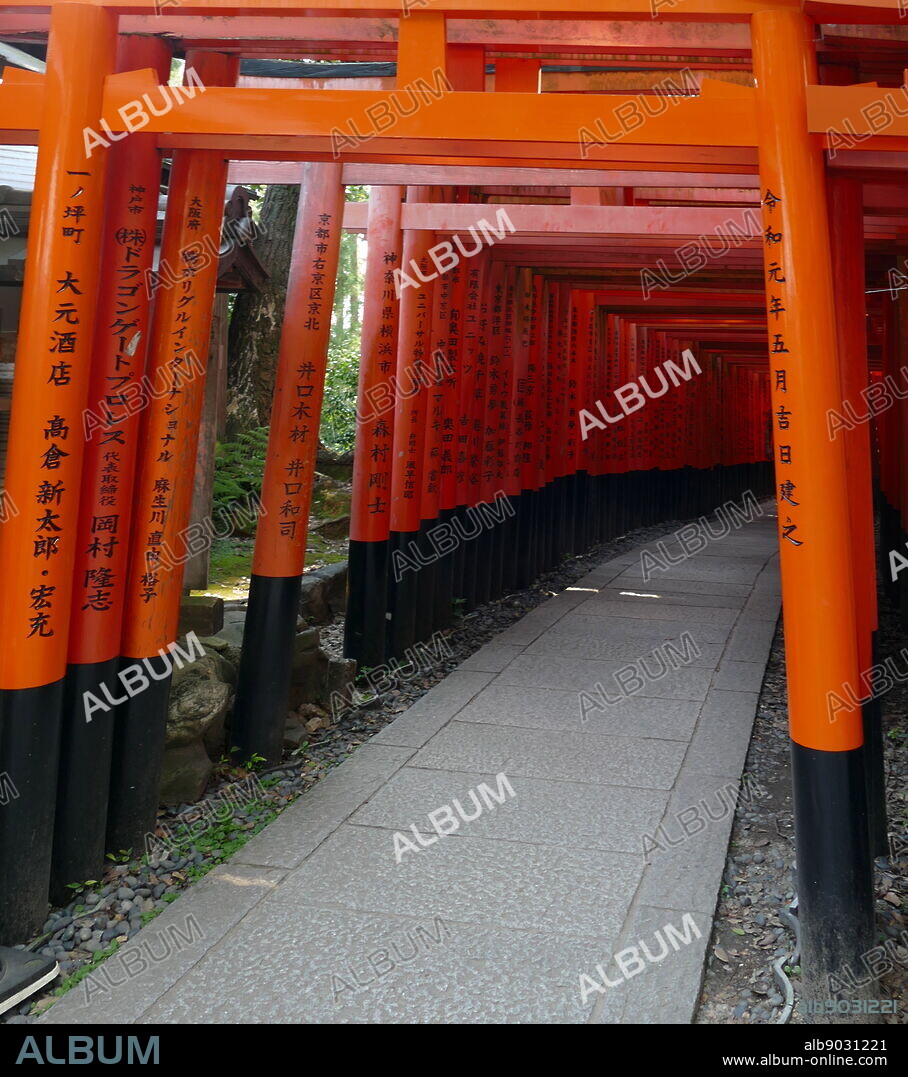alb9031221
Fushimi Inari-taisha shrine, in Fushimi-ku, Kyoto, Japan

|
Añadir a otro lightbox |
|
Añadir a otro lightbox |



¿Ya tienes cuenta? Iniciar sesión
¿No tienes cuenta? Regístrate
Compra esta imagen.
Selecciona el uso:

Título:
Fushimi Inari-taisha shrine, in Fushimi-ku, Kyoto, Japan
Descripción:
Ver traducción automática
Fushimi Inari-taisha shrine, in Fushimi-ku, Kyoto, Japan. The shrine sits at the base of a mountain also named Inari. First and foremost, Inari is the kami of rice, but merchants and manufacturers have traditionally worshiped Inari as the patron of business. Each of the tori at Fushimi Inari-taisha has been donated by a Japanese business. The shrine became the object of imperial patronage during the early Heian period. In 965, Emperor Murakami decreed that messengers carry written accounts of important events to the guardian kami of Japan. The earliest structures were built in 711 on the Inariyama hill in south-western Kyoto, but the shrine was re-located in 816 on the request of the monk Kukai. The main shrine structure was built in 1499.
Crédito:
Album / World History Archive
Autorizaciones:
Modelo: No - Propiedad: No
¿Preguntas relacionadas con los derechos?
¿Preguntas relacionadas con los derechos?
Tamaño imagen:
4313 x 4862 px | 60.0 MB
Tamaño impresión:
36.5 x 41.2 cm | 14.4 x 16.2 in (300 dpi)
 Pinterest
Pinterest Twitter
Twitter Facebook
Facebook Copiar enlace
Copiar enlace Email
Email
